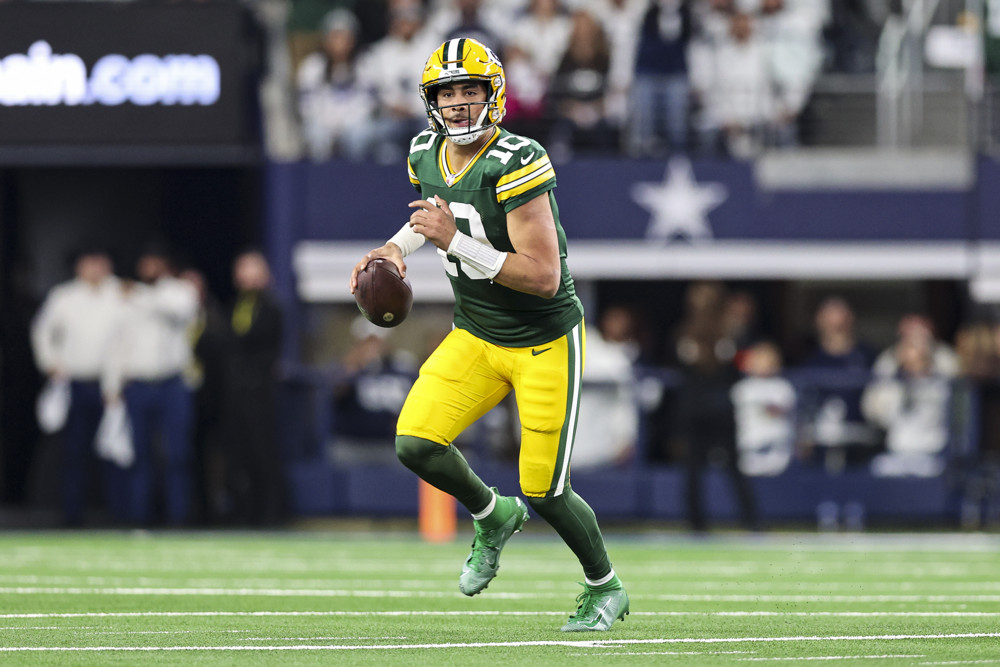Over the last few years, analysis of the passing game has advanced quite a bit. We’ve been moving away from completions and yards and towards Success Rate and Expected Points Added, and now ideas like Completion Percentage Over Expected are somewhat commonplace.
At SIS, we add flavor to the discourse by analyzing catchable throws and on-target throws. We can assess a quarterback’s Catchable Throw Rate, a receiver’s On-Target Catch Rate, and a defensive back’s Deserved Catch Rate (which filters out uncatchable throws, among other things). In the last couple years, we’ve also been tracking the openness of the receiver at the time the ball got to him.
We obviously understand that accurate throws into open windows are the goal. How much of a difference are we talking about?
Completion Percentage by Accuracy and Openness, 2022-23
| Inaccurate | Accurate | |
| Contested | 9% | 52% |
| Normal | 27% | 78% |
| Wide Open | 45% | 95% |
Yards after Catch by Accuracy and Openness, 2022-23
| Inaccurate | Accurate | |
| Contested | 2.0 | 2.0 |
| Normal | 2.8 | 4.4 |
| Wide Open | 6.7 | 8.5 |
In a completely-unsurprising development, passes are more likely to be completed and have better yards after catch if they are more accurate and/or open. The only exception is with yards after catch on contested throws, but that’s because accuracy doesn’t matter much if there’s a defender in arm’s reach.
To put a finer point on the completion percentage results, this is why judging a receiver based on his catch rate is insufficient. Regardless of how close defenders are, passes are some 40 percentage points less likely to be completed if they’re inaccurate. You have to isolate accurate throws to judge a receiver on his catch rate.
(That said, you also can’t take a quarterback’s inaccuracy and just assume that’s the reason a receiver has a poor catch rate. Garrett Wilson caught just 56% of passes that went his way in 2023, which was obviously driven by poor quarterback play. But if you isolate on-target passes, he actually ranked even worse league-wide. It wasn’t all Zach Wilson.)
Setting Expectations
These ideas are incorporated into our player value metric Total Points by comparing a player’s performance on a given target to the average of similar targets in the past. That calculation takes into account the accuracy and openness of the throw but also what route was run and where the receiver lined up.
With all of these elements included in the baseline expectation, we can be confident that a player’s performance above or below that expectation is more attributable to his skill than some schematic or quarterback element.
We can even split up the value a player gained from catching the ball and from yards gained after the catch. Total Points handles these bits a little differently than what you see below—division of credit and edge cases and all that—but this is a good illustration of what goes into our player value system.
Receiving Yards Plus-Minus, 2023
| Player | Catching Yds Above Avg | YAC Above Avg | Total Yds Above Avg |
| Nico Collins | 163 | 169 | 333 |
| Puka Nacua | 122 | 122 | 244 |
| Rashee Rice | 16 | 216 | 232 |
| Deebo Samuel | 60 | 159 | 219 |
| Amon-Ra St. Brown | 89 | 106 | 195 |
| DJ Moore | 111 | 82 | 193 |
| George Kittle | 4 | 184 | 188 |
| George Pickens | 48 | 140 | 187 |
| David Njoku | -6 | 187 | 181 |
| CeeDee Lamb | 113 | 66 | 179 |
Texans receiver Nico Collins wasn’t in the top five in receiving yards in 2023, but he had one of the better On-Target Catch Rates among high-target players and paired that with elite elusiveness (trailing only Zay Flowers in Broken+Missed Tackle Rate among 100+ target receivers). On the whole, he had the best receiving season in the NFL on a per-route basis.
Collins’ balanced production is somewhat of an anomaly, with half of the leaders being strongly YAC-heavy. In general the Total Points system favors after-catch production because it’s mostly owned by the receiver, but that does leave several top pass-catchers conspicuously absent because of their more limited after-catch production: Brandon Aiyuk, Amari Cooper, Justin Jefferson, A.J. Brown, and Tyreek Hill. (Don’t worry, most of them are in the top 20.)
Hill highlights a limitation of our approach given the data we are working with; he gets open because of his speed and agility more than the scheme. We don’t have a way to separate these elements out, though, so these sub-calculations of Total Points will undervalue a player who creates his own shot, so to speak.
CeeDee Lamb had crazy volume and produced with that volume, but he fell into a funky space where statistically he didn’t have a ton of room to overperform. Dak Prescott was so accurate that Lamb’s completions were reasonably likely, and a high percentage of his targets came into a tight window, which left little room to get going after the catch.
Where we go next
Total Points just got a facelift so we’re not likely to overhaul things on that front in the immediate future, but we have some ideas kicking around.
We did some research a couple years ago on specific kinds of throw inaccuracy affecting pass outcomes. We found that throws we might call “too strong”—overthrown or in front of a laterally-moving receiver—are less likely to be completed than “too weak” throws—underthrown or behind a receiver. That would be relatively easy to incorporate into the above methodology, although we’d need to be careful not to cut our sample sizes too fine.
The aforementioned receiver openness conundrum is an important one. We can try to split the difference when it comes to giving the receiver or the playcaller credit for an open throw, but ideally we would have specific markers that would indicate whom we should be patting on the back. Modeling route concepts or some openness predictions using tracking data might get us in that direction.


